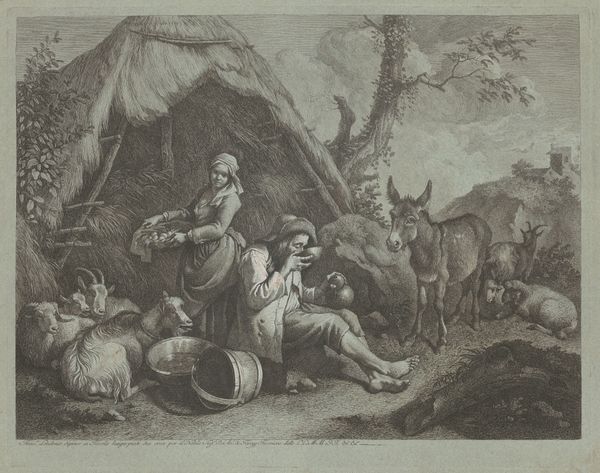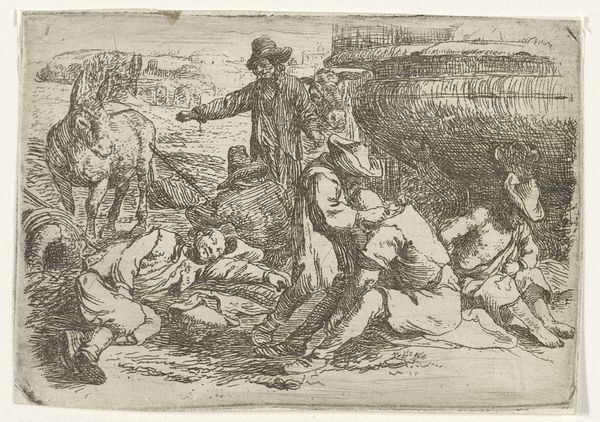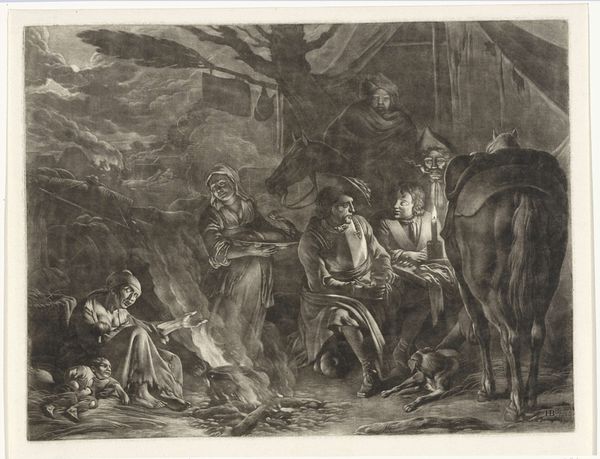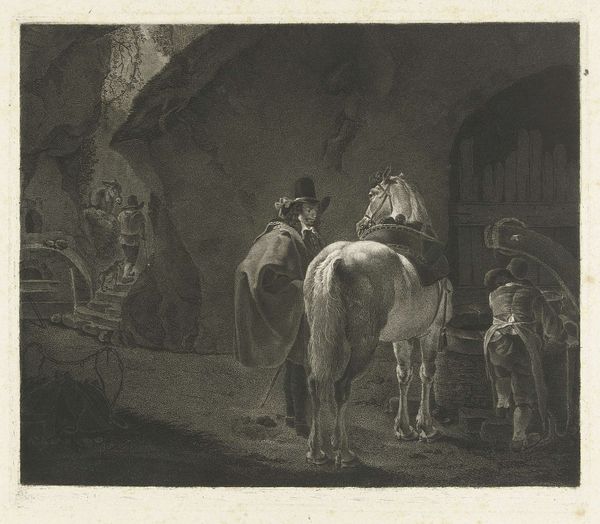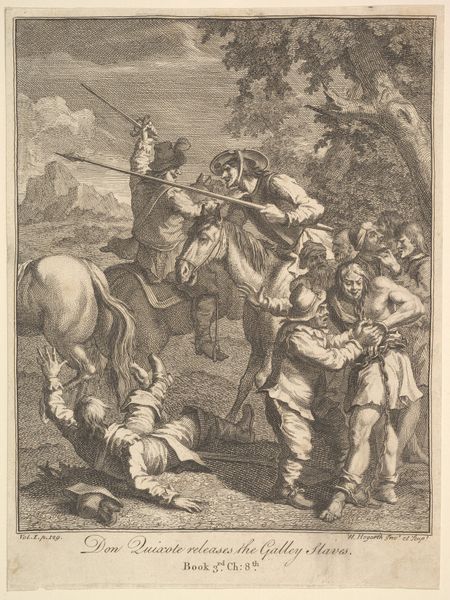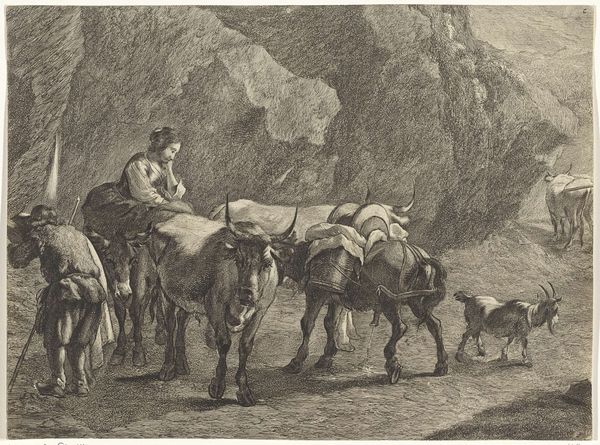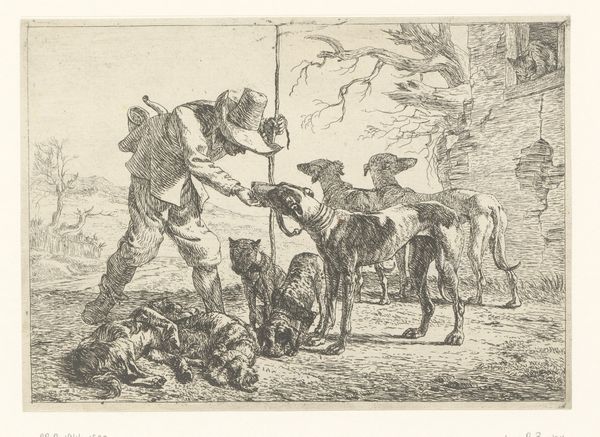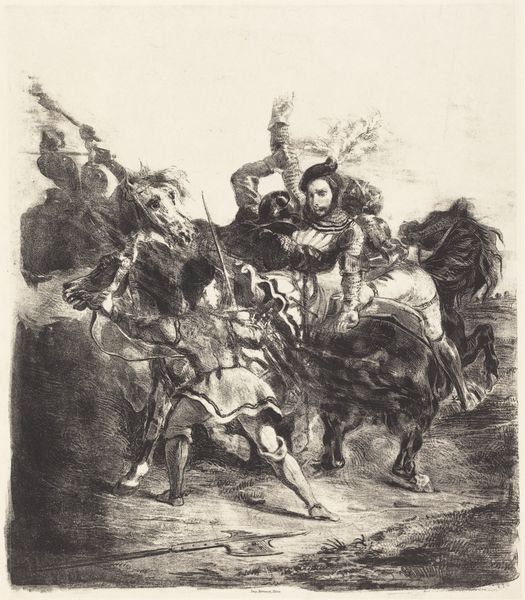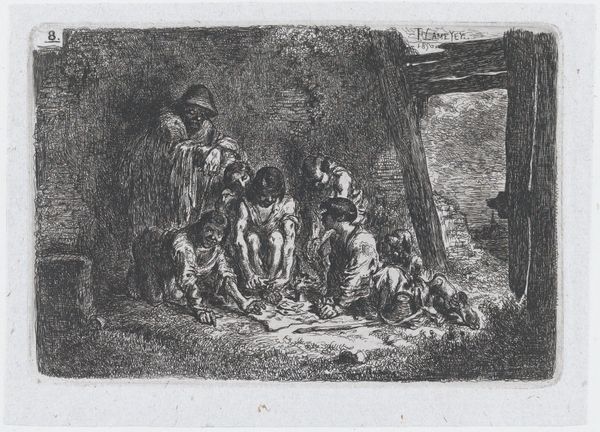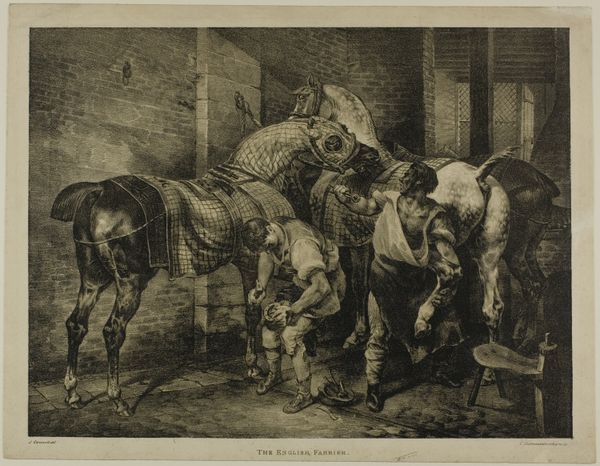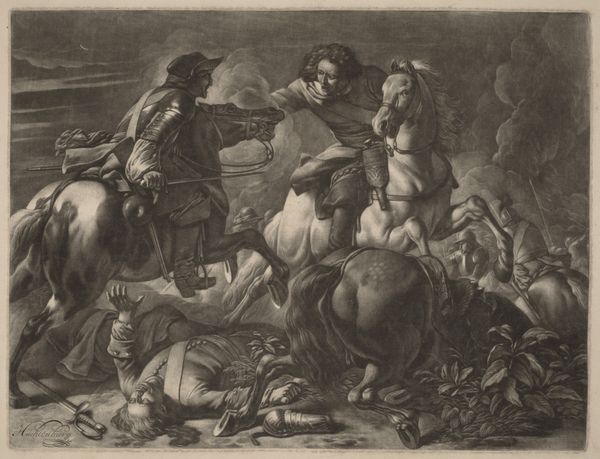
Mother with Two Children and a Horse in Front of an Inn late 17th/early 18th century
0:00
0:00
print, engraving
#
pencil drawn
#
baroque
# print
#
landscape
#
pencil drawing
#
genre-painting
#
engraving
Copyright: National Gallery of Art: CC0 1.0
Editor: Here we have Jan van Huchtenburgh's "Mother with Two Children and a Horse in Front of an Inn," created in the late 17th or early 18th century. It's an engraving, and the first thing that strikes me is the mother’s weary expression. What do you see in this piece beyond a simple genre scene? Curator: I see a snapshot deeply embedded in its historical context, particularly regarding gender and socio-economic roles. This isn't just a scene of everyday life; it's a visual statement about the realities of women, likely from a lower social class, during that period. How do you read the figure of the soldier on horseback in relation to the family group? Editor: Well, he seems separate, almost oblivious. The mother seems burdened while he seems powerful and detached from her troubles. Curator: Precisely. Huchtenburgh, working during a period of significant social stratification, subtly critiques power dynamics. The soldier embodies the dominant patriarchal structure, while the mother represents the marginalized, tasked with childcare and survival in a harsh environment. This image isn’t merely descriptive; it's a commentary on inequality. Consider also the setting – the inn could represent transient life, instability. Does that change your perspective at all? Editor: It does. I initially saw it as just a snapshot of a journey, but knowing that, I now perceive a much deeper sense of hardship and precariousness woven into the lives of women and children in that era, so dependent on men to guide them. Curator: And the question is, who protects the women from the patriarchal forces themselves? This print serves as a potent reminder that art often reflects and interrogates societal power structures, prompting us to examine historical and contemporary gender roles. Editor: Thank you. Now I see how a seemingly simple genre scene can be a complex critique of its time.
Comments
No comments
Be the first to comment and join the conversation on the ultimate creative platform.

